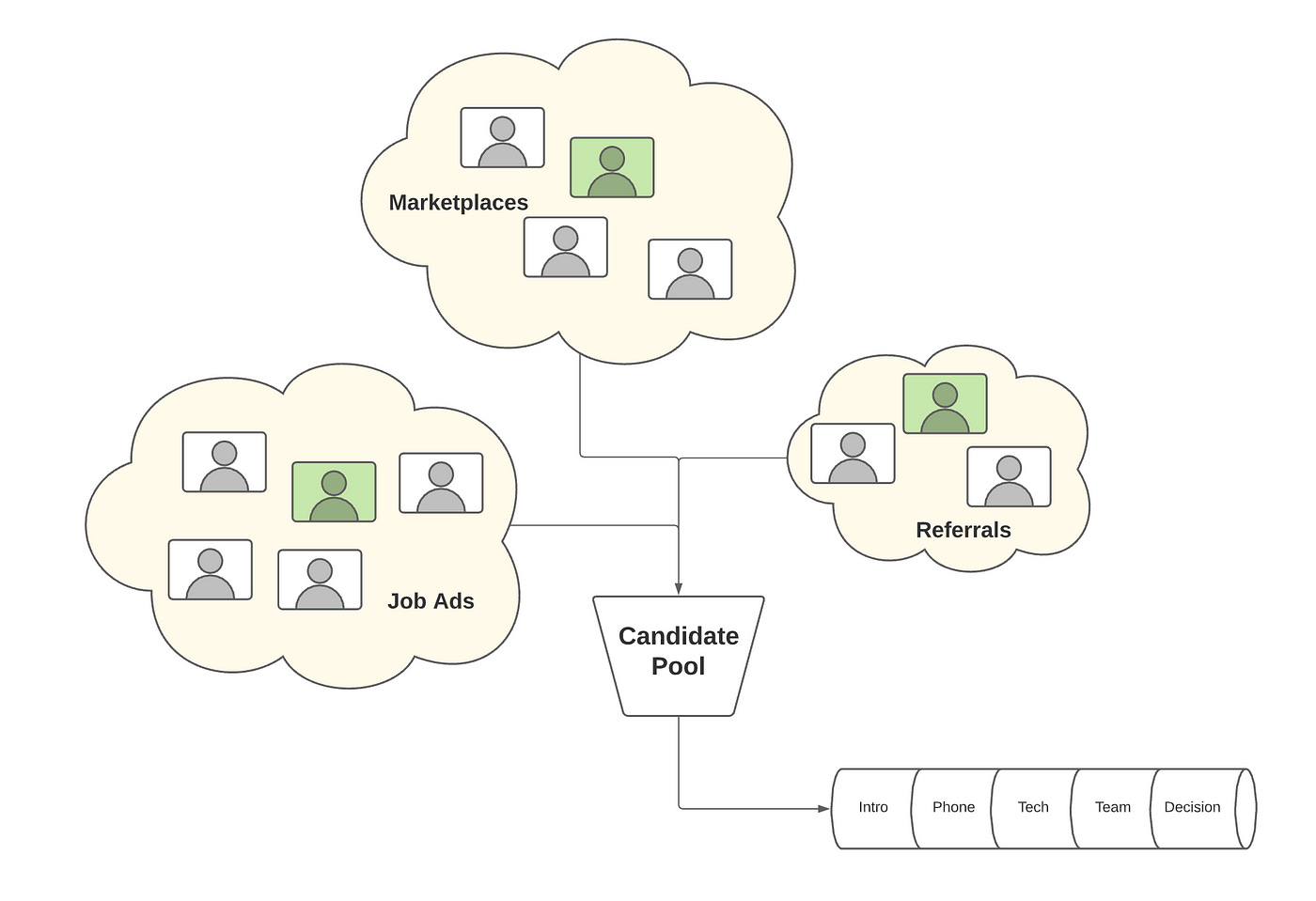On hiring - A rapid hiring process for busy startup engineering leaders
Learn a lightweight hiring process to help you quickly hire great engineers with as little overhead as possible.
I was once the Director of Engineering at a startup that was always busy, busy, busy! We had people to help, processes to fix, and product to ship. Every day was a fire or pivot.
Strategically we had some key skills gaps that I needed to close, fast. I knew the only way to do it was to increase the size of our team, but given all of the other things going on, hiring kept falling by the wayside.
Engineering, architecture, management, company strategy, wouldn’t get done if I focused too much time on hiring, and yet hiring was critical in ensuring these things got done effectively long-term.
I needed to find a way to hire that would have both speed and quality in a way that wouldn’t take away from the hundred other responsibilities on my plate.
I decided to implement a lightweight process that would help me achieve my hiring goals with as little friction as possible and without interrupting the rest of my priorities.
This is that process.
This process assumes a few things
Be sure to tweak this process (or throw it out entirely, if appropriate) if your context is not the same.
You have few resources, whether it be time or money
You need to do most of the hiring process yourself
Building the pipeline
Efficient hiring is about building a pipeline and getting qualified candidates through that pipeline with as minimal effort as possible.
After doing it for a bit, I saw an immediate pattern: software development. The process of moving a candidate from sourcing to closing felt so close to how an issue goes from ideation to development to delivery that I started treating it like a Kanban-style software project:
From my perspective, we had the following stages:
Sourcing
Intro Email
Phone Screen
Tech Screen (Prompt)
Tech Screen (Discussion)
Group Screen
Decision
Offer or Rejection
These stages were mapped to status columns, and a candidate was an issue ticket that flowed from stage to stage. An additional element was who was responsible for the next-step:
Was I supposed to do something? (eg. send an email, schedule an invite)
Were they supposed to do something? (eg. send us a technical submission)
Was the next step scheduled scheduled?
This worked really well, especially as I started to involve other developers in the process. By leaving comments and updates on the ticket, it was just as simple as collaborating on an issue would be.
Queue management practices also worked well for the pipeline. Monitoring cycle time and wait time helped me identify pipeline bottlenecks early, allowing me to switch focus as needed.
The candidate only saw 3 of these stages
From the candidate’s perspective, they only had to “prepare” for 3 of the stages:
Phone Screen
Tech Screen
Group Screen
This helped make the process feel lightweight. It also kept things simple and straightforward when I had to explain the hiring process to them. Advertising a hiring process as a “3-step process” was massive in an age where some companies require you to study 6 months just for an interview.
Remember: a snappy and simple process is a competitive advantage. I strove for a 2-week maximum turnaround time from source to decision.
Sourcing — Where do you find developers?
Sourcing is the act of finding candidates to bring into your pipeline. There’s a lot of different channels you can use to source, with varying levels of cost, effort, and effectiveness.
I found it the most time-consuming part of the hiring process. I’d spend about 30 minutes to an hour a day sourcing, when I could spare it.
LinkedIn
Low effort, High Value
A couple of LinkedIn posts to your network can draw a significant amount of inbound interest. As someone who has built up a network over time, it was one of my largest sources of candidate leads.
If you don’t have a large network today, I recommend you start building it — it’ll pay off dividends the next time you hire. It’s not just the number of 1st-degree connections that matter, either. Every 1st-degree connection you have expands your 2nd and 3rd-degree reach.
Keep reading with a 7-day free trial
Subscribe to Joseph Gefroh to keep reading this post and get 7 days of free access to the full post archives.






